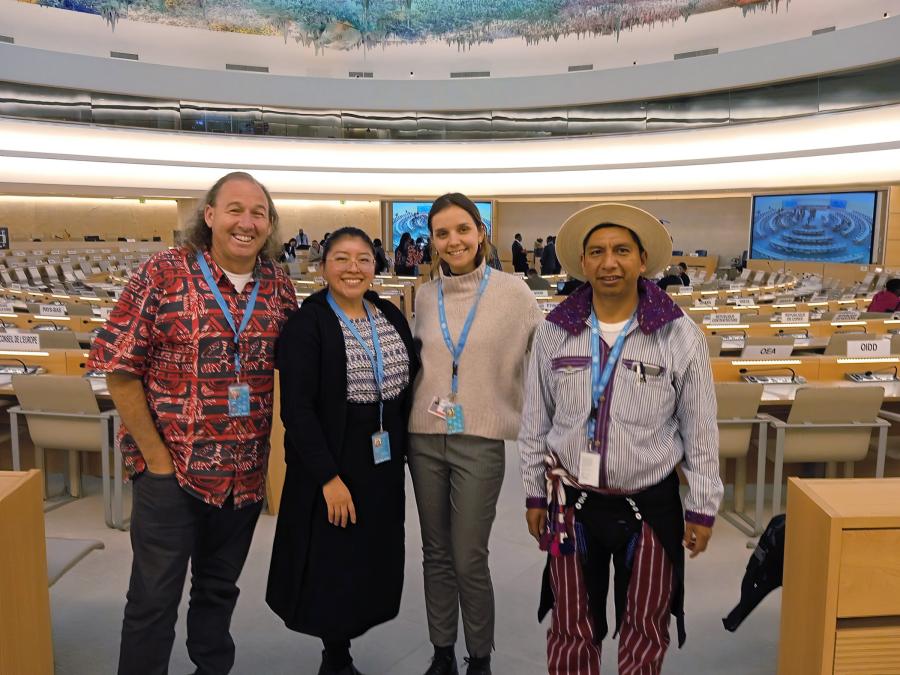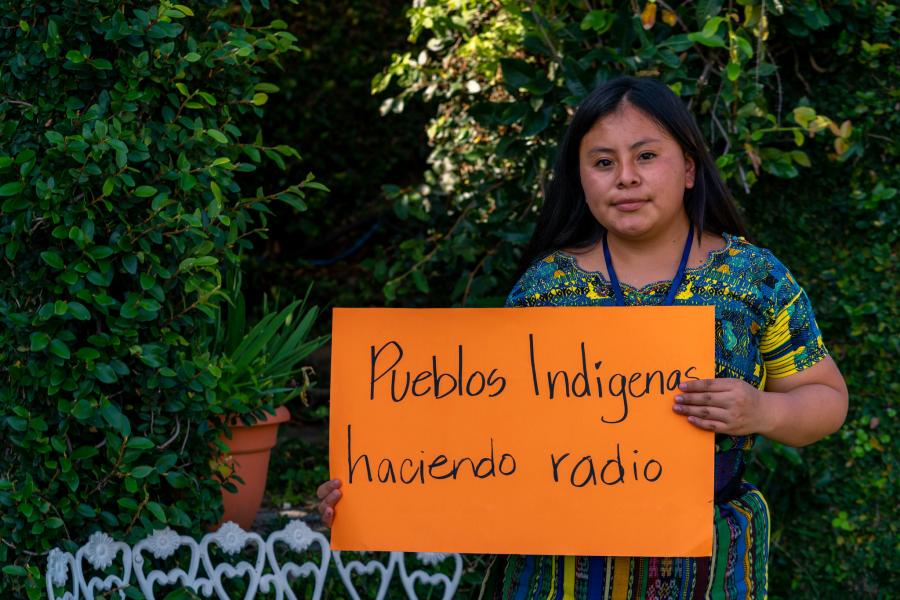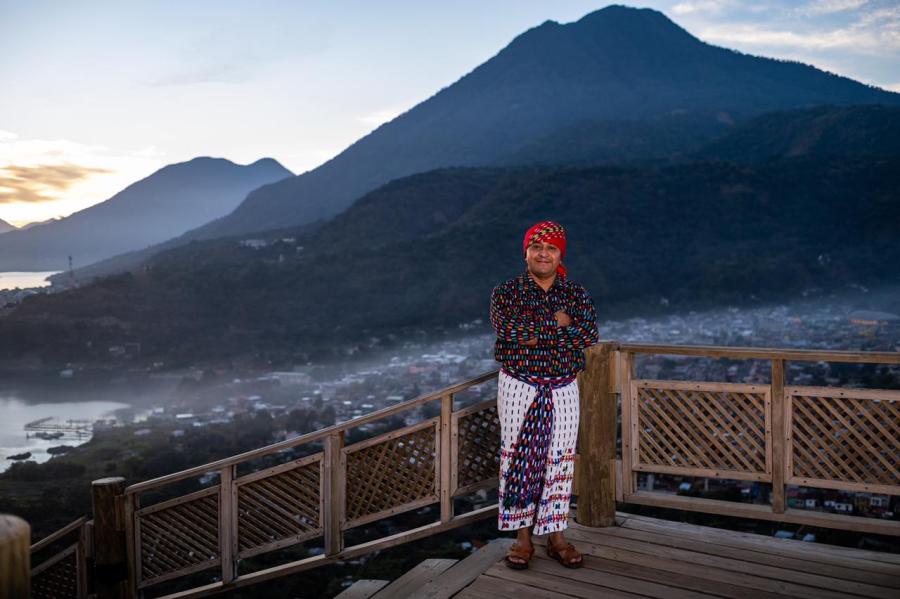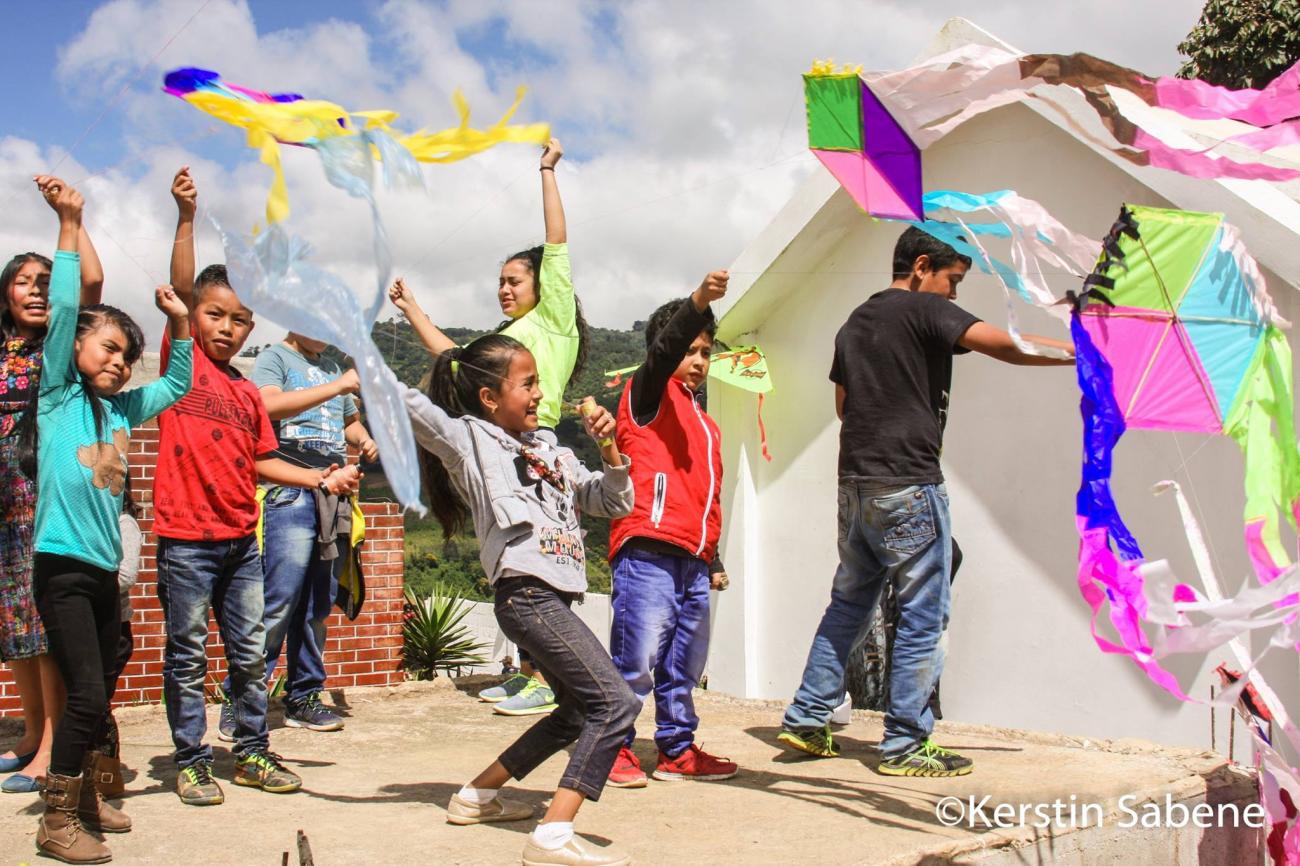
By Kerstin Sabene
On November 1st and 2nd, “El Dia de los Difuntos” or Day of the Dead is celebrated throughout Guatemala, especially in the Maya Kaqchikel town of Santiago, Sacatepequez. It is here in its lush central highlands where the sacred tradition of flying giant kites was born 121 years ago.
Because of COVID-19, cultural events around the world, including the now infamous, gigantic kite festival of Santiago, Sacatepequez, have all been cancelled. “In its 121-year history, the only other time this has happened was in 2005 after Hurricane Stan tore through parts of Central America,” explained Luis Ixcajoc, a life-long resident of Santiago and key organizer in the town’s kite festival activities.
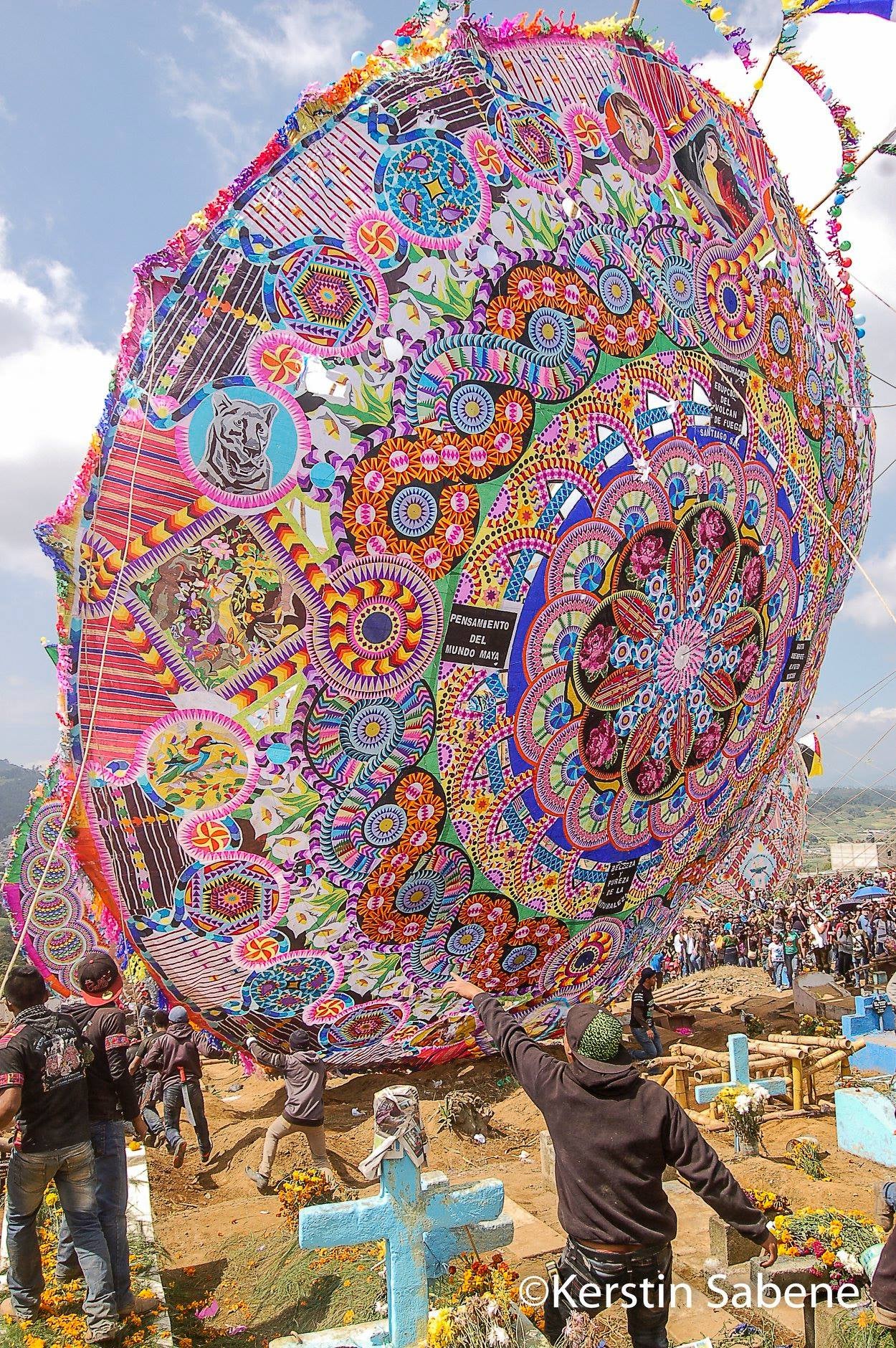
Giant kite that has been hoisted up into position in the Santiago cemetery on Dia de los Muertos.
In Santiago, Day of the Dead Celebrations are the culmination of between six to eleven months of work for the barilleteros, or kite makers. It is clearly an intrinsic part of the community’s culture, just like the air that they breathe.
Now, fifteen years after Hurricane Stan, and in the midst of a pandemic, everyday life has become yet another struggle for the people of Guatemala where half of its population already live in extreme poverty. Thousands of Guatemalans have lost their jobs and while the “State of Calamity” was officially lifted on October 1, it is still difficult for many people to find work. Some are still taking to the streets waving white flags to signal that they need food. Revenue from tourism, which is a large portion of Santiago’s income, will be non-existent this year.
“We need to lift some spirits and continue to fly our beautiful kites,” said Ignacio Ochoa, a Guatemalan anthropologist, who together with Luis Ixcajoc in Santiago, recently devised a plan to teach migrant children via Zoom about the tradition of kite-building at the Oakland Catholic Center in California. “I started introducing kite-making and flying as a way to empower migrant children and their parents,” he said. “By recreating their culture here in the U.S., it helps them to feel proud of their own heritage.”
Altogether, there have been three kite-making workshops via Zoom from Guatemala to California this October. The last one, held this past Wednesday, October 28, was attended by more than a dozen children and their parents.
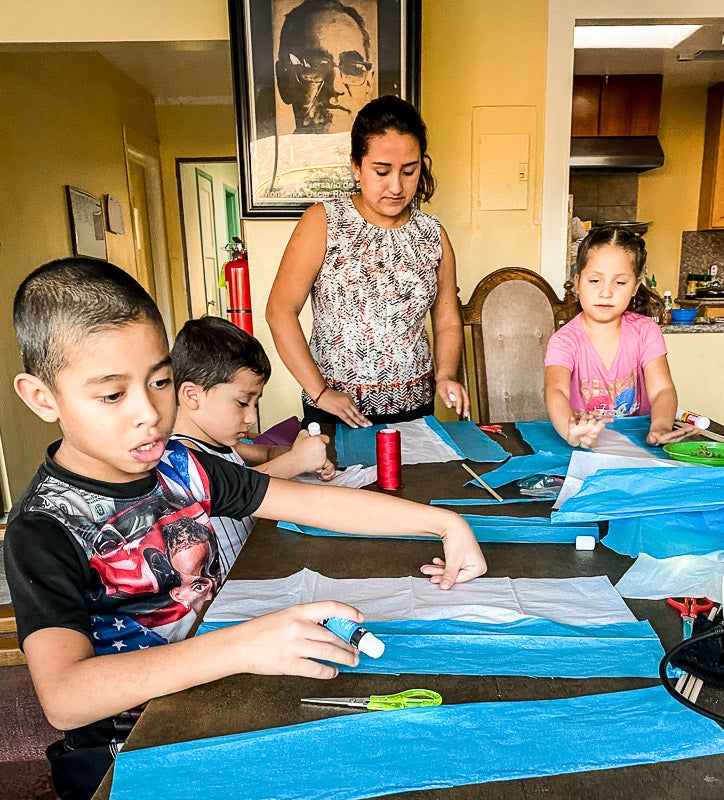
Kite-making workshop at Oakland Catholic Center on October 28, 2020. Photo by Ignacio Ochoa.
The Catholic Center in Oakland is a Sanctuary for Latin American migrants and has been open to Guatemalans as a venue where they can congregate for cultural events. “That’s why we introduced the idea of celebrating Day of the Dead here,” said Ochoa. “It's a way to validate their cultural heritage, while at the same time providing them a safe haven to tell their unofficial stories and to learn about their rights as migrants.”
For the past two years, Ochoa has been accompanying migrant caravans and working with those who have been part of the Sanctuary Movement and the Catholic Worker Movement inspired by Dorothy Day. While conducting his research, he realized just how much migrants were missing their celebrations and especially their food. “Day of the Dead is both a cultural and a political phenomenon,” explains Ochoa, because it now includes the stories of so many Guatemalans who because of migrating have lost their lives in the desert as well.”
How the Guatemalan Kite-Making Tradition Began
There are many myths to explain why the now infamous giant kites became part of the Day of the Dead tradition. One myth contends that the kites serve as a physical conduit to the spirits of the departed who wish to visit earth on these days.
According to Vicenta Lorenza Jolon Saz, an 88-year old resident of Santiago, kite-making began here 121 years ago because there was a high incidence of child mortality. Speaking in her native Maya Kaqchikel language, Jolon Saz, went on to explain how “people believed that the kites helped to banish bad spirits, thereby reducing infant deaths.”
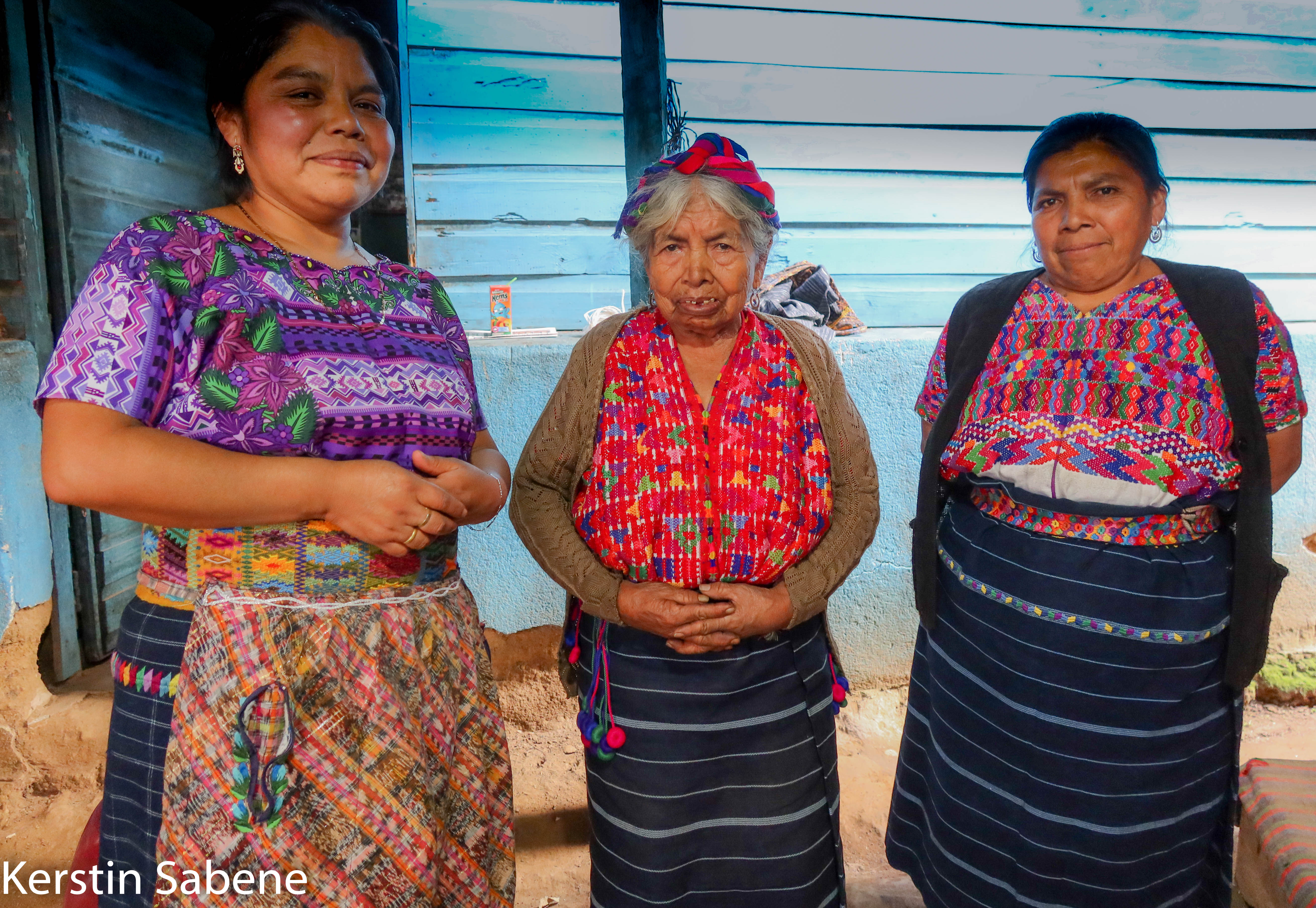
(L to R), Berta Quel Culajay, granddaughter of Vicenta Lorenza Jolon Saz (center) and her daughter, Feliciana Isjotop Jolon.
Jolon Saz lamented the fact that so many customs had changed over the years. She vividly recalled how when she was young, families would go to the cemetery the night of October 31st with candles and blankets and sleep there. “It’s a tradition that I loved, but it stopped about 30 years ago,” she said. “Also, back then, all the kites were flown. Now, because of their enormous size ̶ some as large as 20 meters in diameter ̶ most of the kites don’t even fly,” she added.
Even though most of Santiago’s Indigenous Kaqchikel community is long since Christian, Mayan ceremonies and many of its ancient rites and beliefs persist in daily life. October 31st begins with a Maya ceremony in the cemetery of Santiago to ask for blessing so as to ensure all goes well for the kite festival.
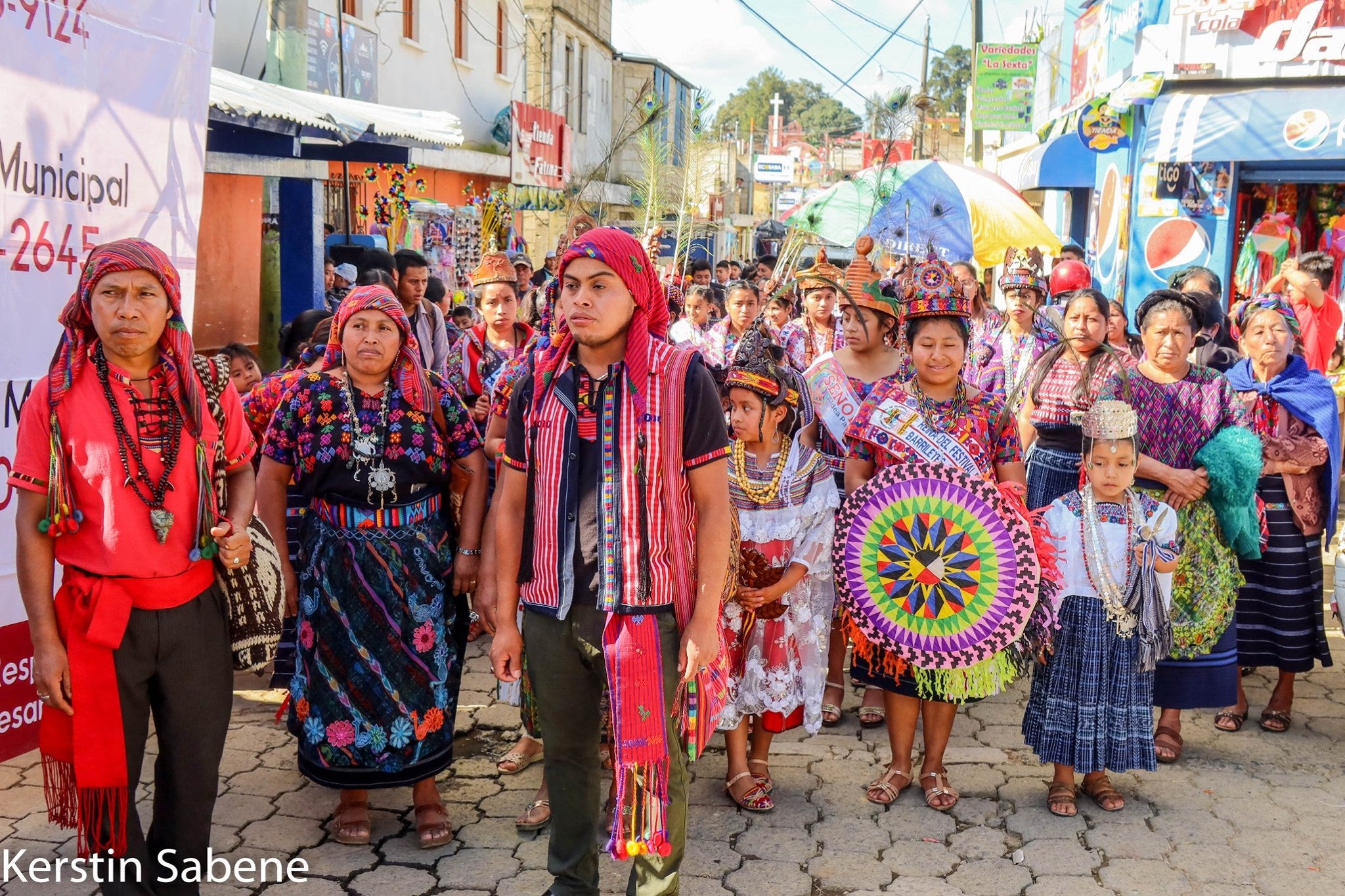
Parade of Maya spiritual guides, queens, and local officials on October 31, 2019, walking through the streets of Santiago.
The Maya ceremony is followed by a walk through town with Maya queens from different regions of Guatemala. A spokesperson then asks permission of the parents of the three new candidates for queen of Santiago for their participation in the kite festival. The caravan stops at the homes of all three families, picks-up each candidate who joins the caravan and then returns to town where the actual election is held. Last year’s elected queen, Blanca Leticia Macur Ixcajoc will retain her title as the reigning queen of Santiago until next year.
“On November 1st, Day of the Dead, Catholics and Evangelicals, as well as those who only practice the Mayan spirituality, go to the cemetery to bring flowers, decorate family tombs and to fly a kite for their loved ones,” said Ochoa. “Here at the Catholic Center in Oakland, California this Sunday, we will create an altar with flowers and pictures of loved ones and hold a mass in their honor. It will be a way to bring some happiness, to reinforce our cultural identity and to send breezes from Guatemala.”
—Kerstin Sabene is a photojournalist currently based in Guatemala.
Top photo: Children flying kites in the Santiago cemetery on Dia de los Muertos.
